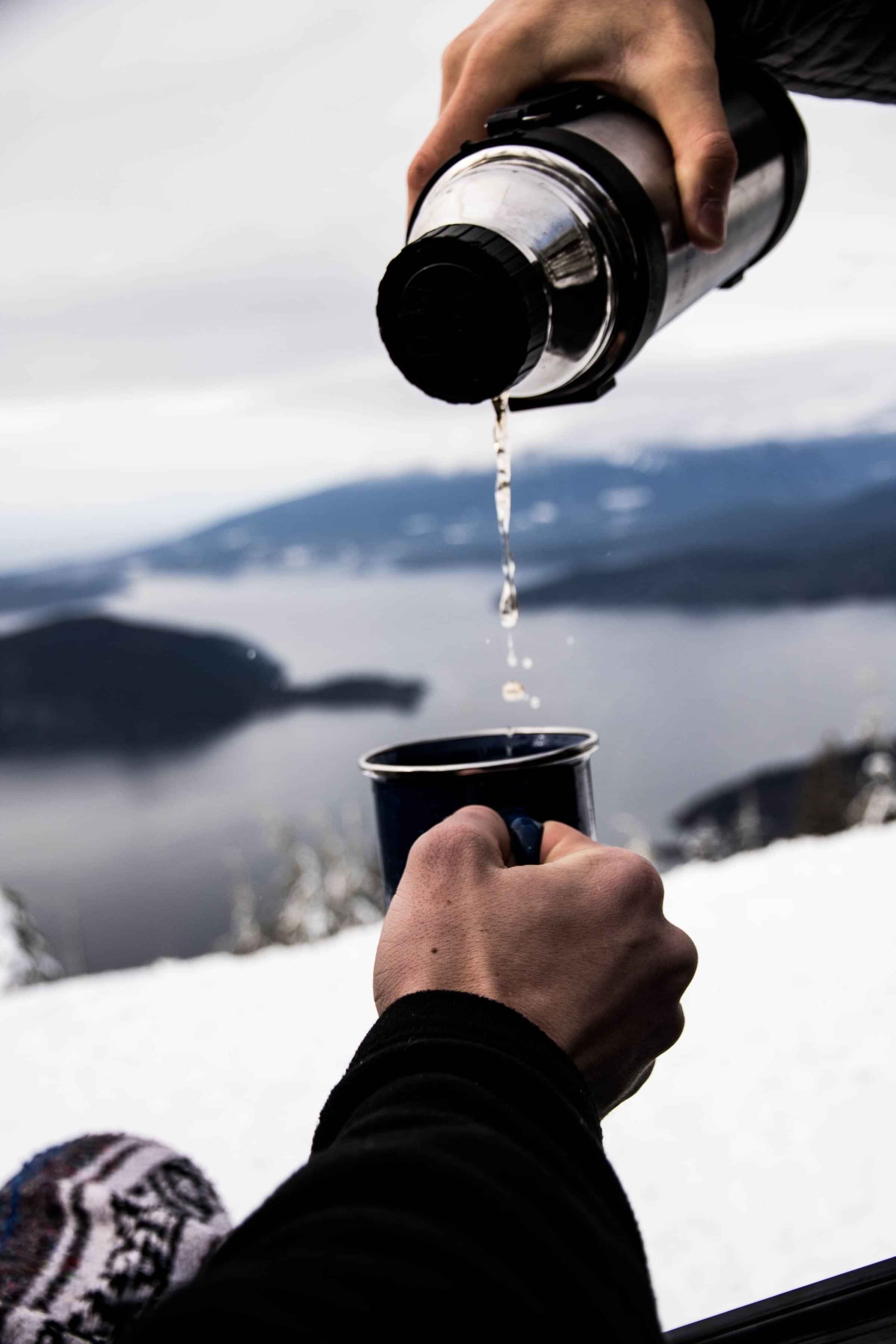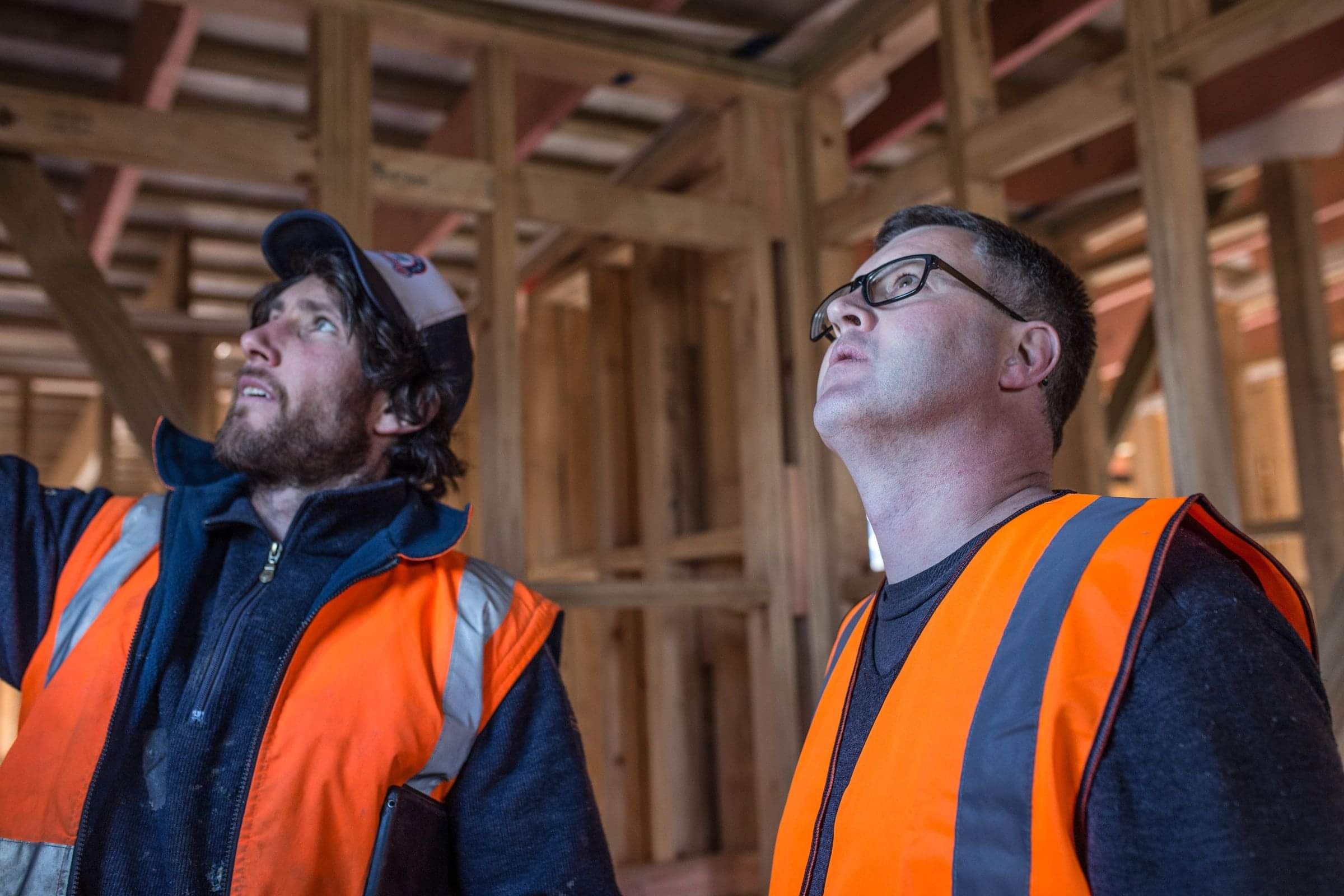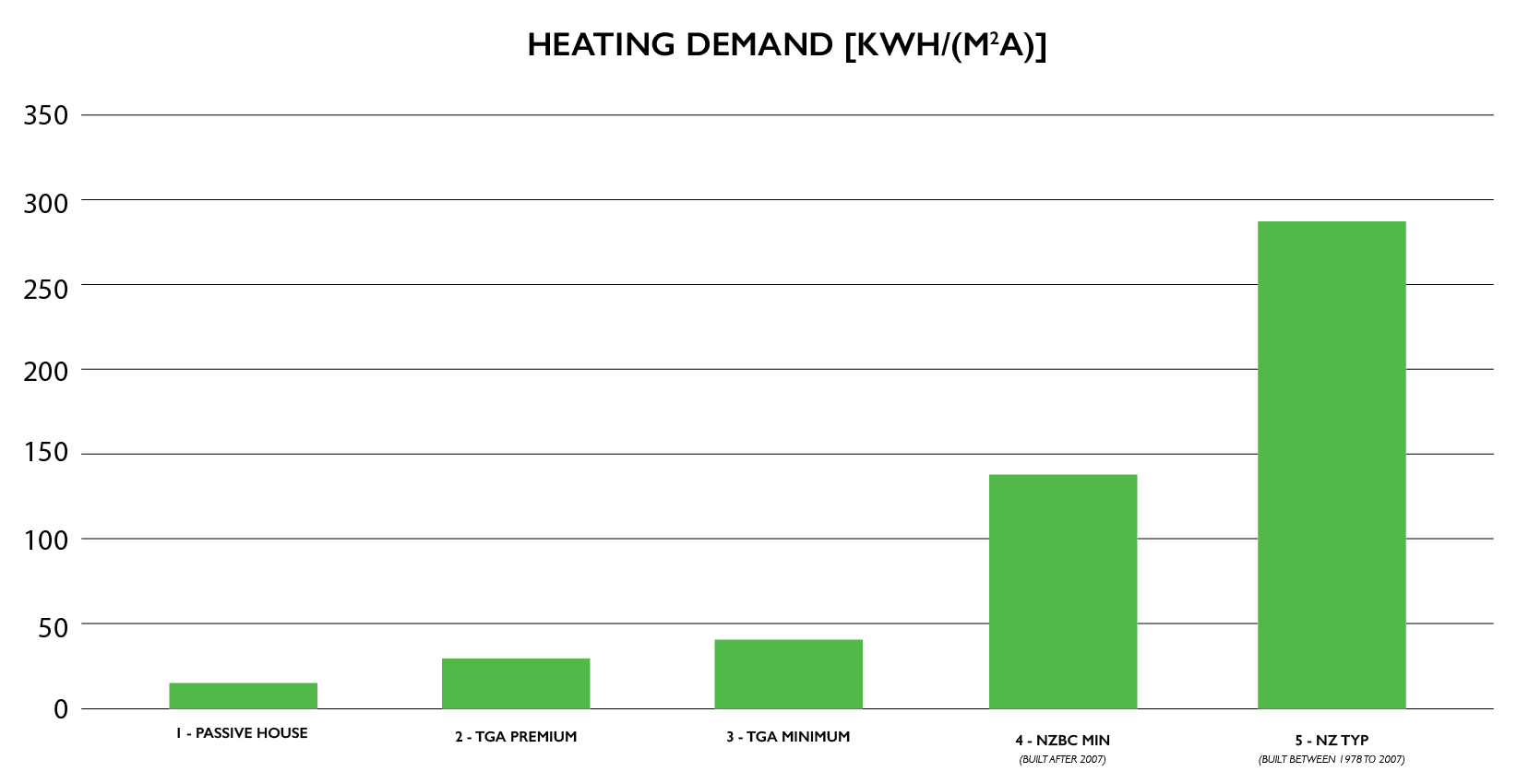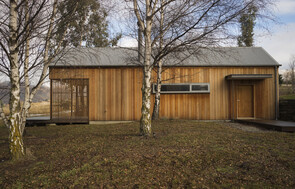What is Passive House Architecture?
Passive House (or PassivHaus) is a low energy standard for buildings that minimises energy use and maximises comfort and affordability.
Passive House was created (in Germany in the 1980s) to hit the sweet spot between creating low energy buildings, designed to achieve the World Health Organisation recommended temperatures and levels of humidity, at a cost which most people could afford.
There are no specified materials or construction methods, and the buildings are designed specific to the climate region. This means you will have a known outcome in terms of comfort and energy usage, but the design or method of construction is not dictated. This is why it is applicable throughout the world, and can be adapted to suit any type of design or building.
Passive House Architecture is designed to retain more heat over time, so less energy is needed to maintain temperature – much like a thermos flask. It creates an airtight, breathable structure to keep warmth in, cold out, and the air always fresh and healthy. You can expect your building to be at least 20°C in winter and at most 26°C in summer without turning on a fan or a heater. It will also be in a comfortable humidity range of 30-70%.

How do we achieve that?
A Passive House Architecture combines the following primary principles:
- High levels of insulation
- Insulated window frames with double or triple glazing
- Highly efficient heat recovery ventilation for fresh air
- No gaps in the insulation of your home (ie no thermal bridge)
- An airtight building envelope
Additionally, as part of the design work, we look for ways to bring your power bill close to zero. We do this by choosing efficient hot water heating and appliances, LED lighting and exploring on-site energy production (like solar).

Careful design & detailing combined with a comprehensive understanding of the Passive House principles means it is possible to construct a house which uses almost no heating and has a fantastic indoor climate. It is then very easy to create a Net Zero Energy House, because your energy requirements are so low.
What does that mean for you?
In a traditional New Zealand house (even many new builds) a substantial amount of heat is lost through the walls, floors and roof, even in what most people would say are well insulated houses. As a result, this heat has to be replaced, meaning a high energy output (and high energy bill).
In a Passive House that heat loss is minimal, and, with the use of a combination of passive heating and heat recovery ventilation, almost all of your heating requirements are provided for.
For you, that means a comfortable and healthy living environment with minimal on-going costs, and minimal management. There’s no need to turn heaters on and off, lug around firewood, or keep the log burner stoked.

How much energy does a Passive House consume?
Specific Energy Demand
The Passive House standard has a Specific Energy Demand (heating & cooling) of 15kWh/(m2a).
At Team Green we utilise Passive House design techniques to create the most efficient buildings we can, some reach the Passive House standard, while others still achieve an incredibly high level of energy efficiency. Our company minimum standard for Specific Energy Demand is 50kWh/(m2a).
The table below shows you a three bedroom house in Queenstown (which is above TGA minimum). The site is North Facing, with a lot of solar gain. It shows what energy would be required to keep the same building to 20 degrees for the whole year, based on different construction methods.
Note: Buildings built pre 2007 are not designed to maintain an indoor temperature of 20 degrees at all times, however the current Building Code requirement in H1 does require the building internal environment to be over 20 degrees.

1 - Passive House
SHD less than 15 kWh/m2a
- European timber triple glazed windows
- Best practice insulation and Thermal Bridge free design
- Airtightness of 0.5 air changes per hour at 50 pascals pressure. (Note: PH requirement is 0.6 minimum)
2 - TGA Premium
SHD of 25 kWh/m2a
- European timber triple glazed windows
- Insulated well above NZB Code, minimised Thermal Bridges
- Airtightness of 1.5 air changes per hour at 50 pascals pressure. (Note: this is a minimum requirement in a lot of countries)
3 - TGA Minimum
SHD of 35 kWh/m2a
- Double glazed, Thermally broken aluminium windows
- Insulated well above NZB Code, minimised Thermal Bridges
- Airtightness of 1.5 air changes per hour at 50 pascals pressure. (Note: this is a minimum requirement in many countries)
4 - NZBC Building Code Minimum
(built after 2007): SHD of 140kWh/m2a
- Double glazed aluminium windows
- Insulated to current code minimum for South Island, with lots of Thermal Bridges
- Airtightness of 4 air changes per hour at 50 pascals pressure
5 - Typ NZ
Typical NZ building in Queenstown built between 1978 and 2007 with a SHD of 285kWh/m2a
- Single glazed aluminium windows
- Poorly insulated thermal envelope
- No real Airtightness - Air leakage
Primary Energy Use
The Passive House standard has a maximum annual Primary Energy Use of 120kWh/(m2a). This is the total energy of all household appliances, and is achieved by reducing the requirement for grid electricity. This can be done by utilising highly efficient Hot Water Heating, LED for lighting, and the highest Energy Star rated appliances. This will further reduce your overall energy usage and therefore energy bill. You can then look at alternative forms of renewable on-site energy production. This will much more easily allow you to have a Net Zero Energy Building/House bringing your annual energy bill to zero.
How comfortable can I expect to be in a Passive House?
You can expect your building to be comfortable all year round with minimal need for heating. Passive House guidelines suggest you can expect the following:
- Operative temperatures* in Winter of at least 20°C (throughout the house)
- Operative temperature* in summer does not exceed 26°C at 60% Relative Humidity (or equivalent) for more than 5% of the time
- Relative Humidity is in a range of 30-70%
- Air Velocity is below 0.2m/s
- No thermal draft
- Ability to adjust hydrothermal conditions to a degree
- Frequency of overheating ≤ 10% of the time
* Operative temperature is the mean of the surface temperature and radiant room temperature
Passive House Criteria
- Maximum Heat Load ≤ 10W/m2
- Specific Energy Demand (heating & cooling) ≤ 15kWh/(m2a) (Energy required for space heating or cooling)
- Maximum Annual Primary Energy ≤ 120kWh/(m2a)
- Airtightness (under pressure of 50 Pascal) n50 ≤ 0.6 per hr
- Internal Surface Temperatures ≤ 3°C Below mean ambient Temperature
- Thermal Bridges ≤ 0.01 W/(mK)
- Ventilation System ≥ 75% efficient
While not all of our project will achieve these criteria, we still utilise the principles of Passive House in all our designs, which means incredible levels of energy efficiency for you and your building.
Learn Even More About Passive House
If you'd like to know more about Passive House please check out some of the following documents. The Bre Passive House Primer gives a great overview of Passive House, the iPHA brochure is a more detailed document from The Passive House Association, while the ProClima Study looks into the challenges we face with with moisture control and air tightness and how we can overcome them.



